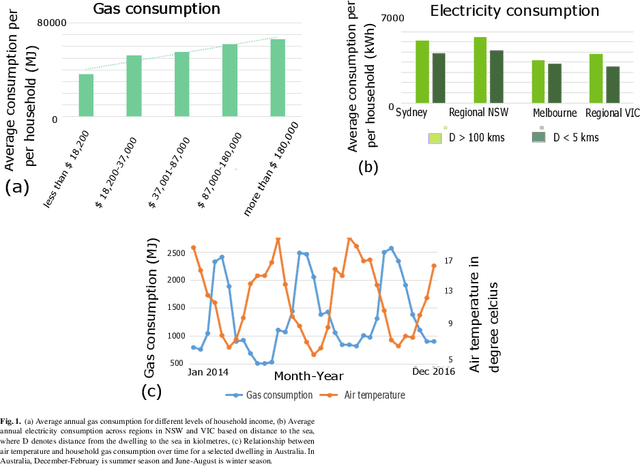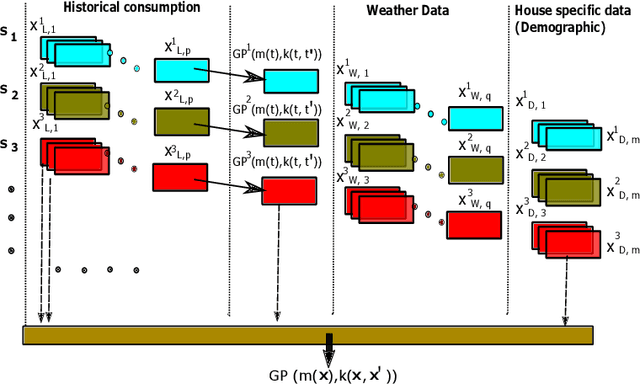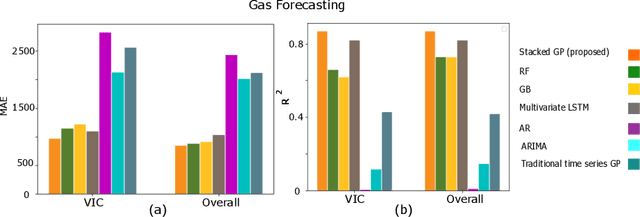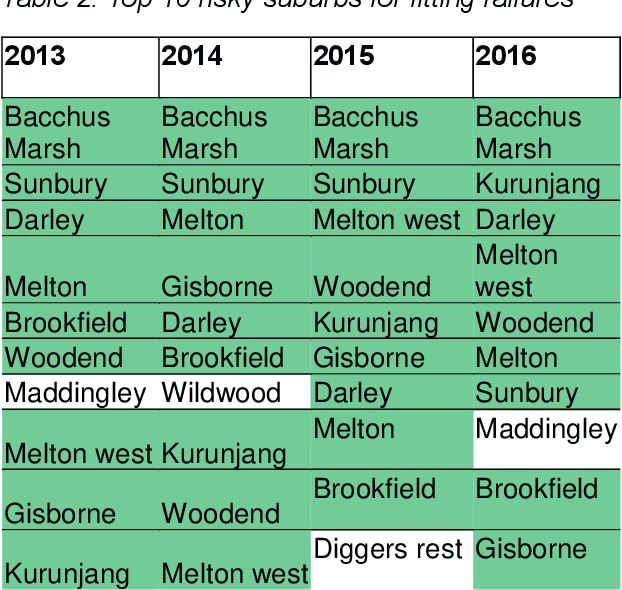Dilusha Weeraddana
Energy consumption forecasting using a stacked nonparametric Bayesian approach
Nov 11, 2020



Abstract:In this paper, the process of forecasting household energy consumption is studied within the framework of the nonparametric Gaussian Process (GP), using multiple short time series data. As we begin to use smart meter data to paint a clearer picture of residential electricity use, it becomes increasingly apparent that we must also construct a detailed picture and understanding of consumer's complex relationship with gas consumption. Both electricity and gas consumption patterns are highly dependent on various factors, and the intricate interplay of these factors is sophisticated. Moreover, since typical gas consumption data is low granularity with very few time points, naive application of conventional time-series forecasting techniques can lead to severe over-fitting. Given these considerations, we construct a stacked GP method where the predictive posteriors of each GP applied to each task are used in the prior and likelihood of the next level GP. We apply our model to a real-world dataset to forecast energy consumption in Australian households across several states. We compare intuitively appealing results against other commonly used machine learning techniques. Overall, the results indicate that the proposed stacked GP model outperforms other forecasting techniques that we tested, especially when we have a multiple short time-series instances.
Utilizing machine learning to prevent water main breaks by understanding pipeline failure drivers
Jun 05, 2020



Abstract:Data61 and Western Water worked collaboratively to apply engineering expertise and Machine Learning tools to find a cost-effective solution to the pipe failure problem in the region west of Melbourne, where on average 400 water main failures occur per year. To achieve this objective, we constructed a detailed picture and understanding of the behaviour of the water pipe network by 1) discovering the underlying drivers of water main breaks, and 2) developing a Machine Learning system to assess and predict the failure likelihood of water main breaking using historical failure records, descriptors of pipes, and other environmental factors. The ensuing results open up an avenue for Western Water to identify the priority of pipe renewals
 Add to Chrome
Add to Chrome Add to Firefox
Add to Firefox Add to Edge
Add to Edge